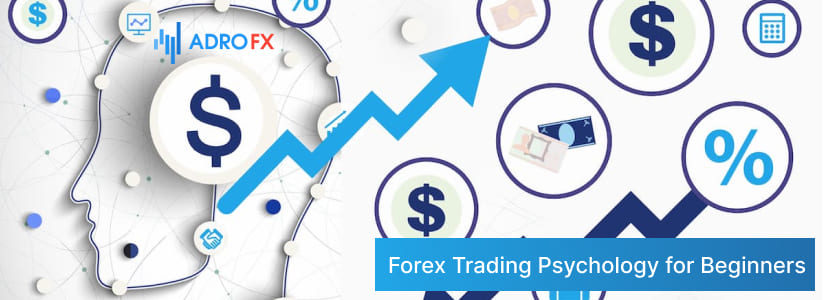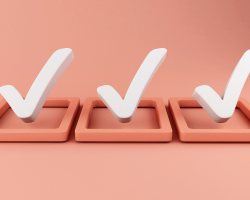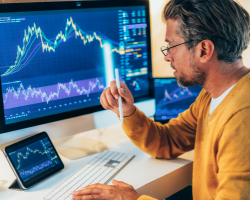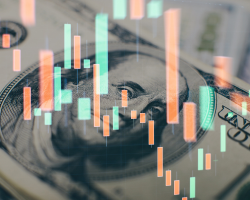Forex Trading Plan: Why You Need it and How to Make it in 2022

When it comes to forex trading, there is a fine line between success and failure, and a forex trading plan is something that can tip the scales in favor of one or the other.
Given the fact that every decision you make when trading the forex market leads to either success or failure, you want to be able to implement a method or formula that is designed to minimize the risk of loss and help you succeed in your achievements and goals.
A forex trading plan is something that many traders value as a helping hand and reliable guide in their trading activities. In fact, many predict your failure as a trader simply because you do not stick to your own personal and customized forex trading plan.
In this article, we will find out what a trading plan is, learn how to create one, and discover the key concepts of any trading plan.
What is a Forex Trading Plan?
A trading plan is a comprehensive decision-making tool for trading activities. It regulates what, when, and how much to trade. This is an individual manual that is compiled according to the temperament and trading style of the individual trader.
First of all, a trading plan should be seen as a template for trading the markets. Perhaps even better, a trading plan can be described as a checklist. This checklist will contain every aspect of executing a trade in a logical sequence and act as a target reference point for trading the markets. In essence, a trading plan will set your complete short and long-term goals and provide you with a clear checklist to achieve them.
We will state right away that your checklist/trading plan should not be overly long or detailed. Once you have formed an effective trading strategy, similar to price action trading, you will be able to consolidate all aspects of your method into concise components. Once you have done this, you will create your checklist/trading plan that acts as your reference point for deciding whether or not to enter the market.
The reason you need a trading plan when trading forex is because you need a way to make sure you are not trading on emotion. Trading can be a highly emotional activity, and if you do not follow an objective trading plan which predetermines all of your actions in the market, you will almost certainly slip into emotional trading which very often leads to losing money.
Perhaps the most important thing that a trading plan gives us is that it keeps us from making second-rate/doubtful trades and from trading in uncertain market conditions. It naturally reduces the number of losing trades, which will improve your overall trading results. Many traders tend to "run and gun" in the market instead of learning how to trade like a sniper, and the reason is that they have not taken the time to form their effective trading plan. We assure you that the fastest way to increase your profits is to trade with less frequency and higher quality, and a trading plan will naturally help you do that. Now let's look at the different components of an effective trading plan.
Making a Forex Trading Plan
A trading plan can really change the whole attitude toward trading. It essentially flips the mentality, shifting priorities from chasing fast money to becoming a professional in a new business. By creating trading plans you start to work effectively and reliably insure yourself against "accidental" losses. Trading consists of many factors that need to be constantly monitored. Therefore, following a trading plan is a vital part of this activity.
Less opportunities
The last thing a trader should be doing is constantly thinking about trading and the good opportunities he is missing. It really drives you crazy. Checking trading charts and results every 10-30 minutes can quickly become a very bad habit, which, in addition, does not help much. To avoid this problem, incorporate a daily routine into your trading plan.
Indeed, many traders believe that a forex trading plan is something limiting the potential profits, but it is not true. Chasing each and every price fluctuation or Price Action pattern will do you no good. Grabbing an opportunity is just a tiny part of the whole process - the point of trading is not to open a trade. There is much more - controlling risks, smart market exit, limiting your risks wisely. So, you should not worry about “missed” opportunities because the trading plan is a kind of filter letting you get only those that are just right for you,
Lower chance for emotional trading
Let's assume that you already have a working strategy in trading, which has repeatedly brought profit and perfectly proved itself. You have certain trading skills and feel confident in the market. But no one will believe that you don't feel the excitement before every forthcoming trade.
Only robots have no emotions in trading - that's their key advantage when trading on financial markets. One way or another, a person is always worried about the capital. And the bigger the deposit, the stronger the excitement. That is why absolutely all traders face emotions regardless of their experience in trading. Such is the specific character of this profession.
That's why it is so crucial to prepare a trading plan and follow it - it will not let you make some prodigious decision and regret it a second after.
How to Prepare a Forex Trading Plan
There is no strict template of a trading plan or necessary aspects that should be there. Each trader should decide himself which ones are needed and which ones can be eliminated. Still, we have prepared for you some things that should be considered, and you decide yourself if you want to include it in your forex trading plan or not.
Assets to trade
Make a list of financial assets you intend to work with. Concentrate exclusively on them. If this list is too long, you will not have time to thoroughly analyze the situation in all markets at once.
At the same time, the list should not be too short. To begin with, focus on ten currency pairs. That will be quite enough. It will allow you to open trades right away when a favorable trading situation occurs. If the list of currency pairs to work with is not long, it will limit your potential profit.
Exit signals
Most traders make the mistake of devoting 90% of their efforts only to finding entry points, completely ignoring the issue of closing trades. Many simply refuse to close a losing trade because they do not want to incur a loss. You must fight this, otherwise, you can lose all the deposit.
If you are "stopped out", it means you were wrong, but do not be dramatic! Many professionals have more losing trades than profitable ones, but due to competent money management and risk management, they eventually make a profit.
Before you enter a trade, you must have a clear idea of where you will exit. At a minimum, in any trade there are two exit points - stop and take profit. A so-called mental, imaginary stop is a bad idea, everything should be spelled out. Determine points for Take-Profit, upon reaching them close part of the position and move the stop to breakeven as an option.
Entry signals
Be sure to write down the rules for entering the market. Without it, your trading plan will be incomplete and largely ineffective. There should be clear criteria. Otherwise, you will improvise each time, which will inevitably affect the profitability of forex trading.
Usually, the rules for entering a trade boil down to something like:
If the potential profit when signal A is triggered is at least three times the distance to the stop, and the market is trading near support at the time, then we buy an Nth number of contracts.
Your system must be complex enough to provide the necessary positive result, but simple enough to make a quick decision. If you have 20 mandatory conditions, many of which are subjective, you will hardly be able to trade with such a system.
Computers often make better trades than humans. A programmed strategy does not need to reason or be in the mood to enter a trade. If the conditions for the entry point are met, the trade is executed. If the trade goes to a loss, or a predetermined profit is achieved, the trade is immediately closed. Computers don't get annoyed when they make a loss, and they don't suffer from excessive ego after a series of successful trades.
Risk-reward ratio
The ratio of risk to profit is denoted by the Latin letter R. For example, if you risk 60 USD in one transaction, and your potential profit is 120 USD, then the ratio R is 1 to 2. Thus, the risk is half of the potential profit. In the example above, this ratio can be stated as 2R. If the potential profit is 180 USD, then this ratio is 3R.
For the parameter considered above, it is necessary to write it in the plan. You can be limited to the indication of its minimum value. That is, if you wrote 2R, it means you're not trying to enter the market when the potential profit will exceed the possible loss by less than 2 times.
Stop-loss (SL) and a Take-profit (TP)
Many traders speculating on the forex market, for some reason, ignore this most important rule of risk management. Without working out the conditions for using limit orders you cannot build a trading strategy.
On many financial exchanges, it is possible to place pending orders that limit losses in a certain trade (Stop-Loss) and fix profits achieved (Take-Profit). They reduce the possibility of losing large sums or zeroing of the deposit, as well as help to keep the profit at the optimal point because the price can rapidly go down!
Usually, the ratio of the distance from the current quote to the Take-Profit line to the Stop-Loss level is 3 to 1. You should not get upset with the Stop-Loss action, because the important point of the trading plan - timely Stop-Loss limitation - has been accomplished. Only a small part of the deposit is lost.
There are several possible varieties of placing the Stop-Loss orders:
- Accounting for the percentage of the existing deposit;
- Stop-Losses behind the resistance/support boundary;
- Points near price extremums;
- Orders on the volatility level (usage of the ATR indicator), etc.
Determining risks
Traditionally, Forex risks are defined in two ways: money or percentages.
It is believed that the first option is more productive. For example, its proponent is the famous trader Neil Fuller. However, you are free to choose the option that best suits you.
You can use both approaches simultaneously. Firstly, determine the percentage risk indicator. It is recommended that its value is within 1-5% of the deposit. After solving this problem, you can determine the risk in the exact amount.
For example, your deposit is 2000 USD. You have defined a risk threshold of 3%. Thus, in money, the indicator will be 60 USD. That is, in one transaction you will risk an amount no more than the calculated value.
The Faults With Trading Plans
For many beginners, trading is a rather emotional business, but it shouldn't be. You shouldn't start placing orders on a whim or follow any approach just because someone you know says it is perfect and brings nice returns. You shouldn't hold a position open just because you can't take even tiny losses. Sticking to a clear trading plan will go a long way toward alleviating the emotional component of trading.
Evaluate your personality type and trading background and build your trading plan around that. Stick to it rigorously during trading, and regularly evaluate it when you're not in the market. Constantly enhance your trading plan, because it is a faithful assistant on the way from a beginner to a professional trader.
Trading With A Demo Account
A demo account is a great opportunity to practice without risking anything. You can get acquainted with the trading terminal, study trading instruments and understand the general principles of the market, decide on the choice of trading instruments (forex, futures, or stocks), and test different trading systems.
The demo account fully replicates the real working conditions on the forex market. All functions, financial indicators, news, and time frames remain real. Thus, a trader gets a real picture and understanding of how the forex market works. You can open a free demo trading account with almost any brokerage company. Brokers in a free format allow testing their trading platform for those, who have not previously encountered trading or specifically with that company. New clients can test and evaluate the trading conditions of the chosen intermediary company. To get a demo account, you only need to register on the official website of the broker.
Reasons to change the trading plan
Depending on the trading system, the points of the trading plan can change. At the end of the trade, it is necessary to carry out its comprehensive analysis: correctness of opening and closing a position, the result of the trade. You also need to note your thoughts and emotions during the trading process, to identify the positive and negative sides and note the points you need to work on. It is important to remember that the situation on the forex market often changes quickly and dramatically, especially after the release of important economic indicators or speeches of heads of central banks. In this case, your trading plan should be reviewed in accordance with the current market situation, and another plan should be drawn up.
You should remember that a trading plan will not help you if you do not strictly follow all its provisions. And here personal discipline is extremely important, without observance of which, success is impossible.
Key Concepts for Trading Plans and Achieving Trading Goals
Trading in the stock and currency markets has its own rules and patterns. Contrary to common misconception, it is not chaos, but a complex ordered system. That's why the most successful traders track their work and create scenarios reflecting different market conditions.
A professional differs from an amateur in that he trades according to a plan and even has several plans that work together. He sticks to them despite all the temptations that go against the plan.
What's the point? The answer is simple - stepping away from the plan means going into emotional trading, and that's always a risk. If everything worked out today, there is no guarantee that success will continue tomorrow. A trading plan means abandoning "casual" profits in favor of a long-term perspective. The only thing worse than haphazard trading is spending time and effort to create a system and not implement it.
Creating Constructive Habits
As we know, plans are meant to systemize something it is implemented to, right? And the system is an opposite to chaos and self-destruction in por case. System is what brings you good habits and here are some of those you can enhance when trading with the plan:
- Discipline
The desire to become disciplined and the constant work on it is a good trader's habit. Without discipline, it is simply impossible to trade successfully. You must accustom yourself to the fact that every trading day should start the same way and strive to always perform all actions according to the established plan. First, you should make a full analysis of the current market situation, and then look for signals to open positions, according to the aspects of the trading plan. If there are signals and positions are open, be sure to place limit orders. Accompany the trades should be in the same way, as required by the rules of the plan.
- The proper perception of losses
Many beginners are panic-stricken by fear of even small losses in the trade. They should not be afraid of it, because losses are an integral part of the trading process. It is better to close a small loss and continue trading than to try to sit out a drawdown, especially if the trade was opened against the prevailing price movement. Therefore, quickly accepting a loss is only conducive to effective trading.
Setting the right objectives
You need to learn how to properly set goals and find ways to achieve them. In addition to long-term goals, intermediate and short-term goals must be chosen correctly. A trader should always have a plan of action to achieve the set goal, considering all possible variants of events. Thanks to the planning and proper goal setting the emotional load on the trader, during the trade, is reduced.
- The concentration of attention.
During the trading process, you must be very focused and not be distracted by anything. To do this, you need to prepare the workplace in advance, remove all unnecessary things, and take care of noise isolation. While trading you don't need to think about anything else but the trading process. Working on self-discipline helps to develop concentration.
When forming a new habit, you will be faced with the task of automating the performance of an action with systematic repetition.
So, spare no effort today for a successful tomorrow. Be ready to sacrifice today to achieve financial heights soon. Always count only on yourself and do not engage in meaningless activities. Don't complain about unfavorable conditions, unreliable people, government, etc., and don't try to change what cannot be changed. And never measure someone else's success on yourself because it doesn't matter what car your neighbor drives. Cultivate your success inside yourself systematically, and the results won't keep you waiting.
Conclusion
The need for a structured, optimized, and thought-out plan for effective trading on financial markets is obvious. Accurate execution of the trading plan will certainly contribute to the improvement of efficiency, as well as help to overcome individual psychological barriers that hinder the realization of one's potential. First, it is recommended to keep a set of rules permanently in view, to move to the stage of unconscious competence more quickly.
If you don't adhere to the principles of the trading plan, your statistics will deteriorate, and income will decrease. These artificial slippages often occur when Take-Profit is unreasonably underestimated, when there is an entry into the market 5-10 points before the signal, when Stop-Loss limits are moved, etc. That's why it's unacceptable to violate the rules of a trading plan without cause.
About AdroFx
Established in 2018, AdroFx is known for its high technology and its ability to deliver high-quality brokerage services in more than 200 countries around the world. AdroFx makes every effort to keep its customers satisfied and to meet all the trading needs of any trader. With the five types of trading accounts, we have all it takes to fit any traders` needs and styles. The company provides access to 115+ trading instruments, including currencies, metals, stocks, and cryptocurrencies, which make it possible to make the most out of trading on the financial markets.









